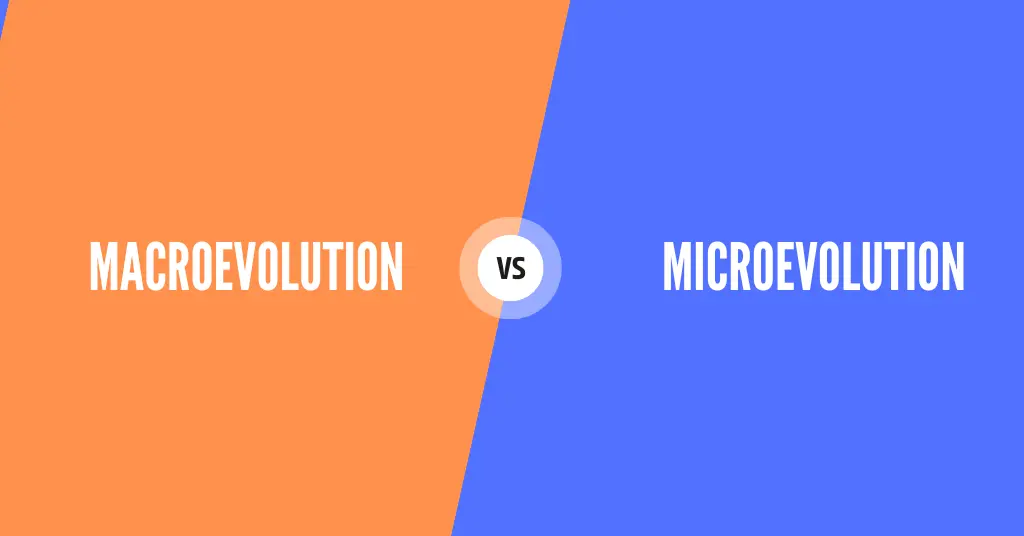AI Answer Evaluation Platform Live Now. Try Free Answer Evaluation Now
Microevolution vs Macroevolution
Evolution is the procedural change over the period of time of the inherited characteristics in biotic populations over successive generations. It is important in biology because it explains the diversity of life on Earth, helps us understand how organisms adapt to their environment, and forms the foundation for fields such as genetics, ecology, and conservation.

Microevolution refers to small-scale changes in the genetic makeup of a population over time, while macroevolution covers the larger-scale changes that occur over longer periods of time, resulting in the development of novel species and elevated taxonomic categories.
In this article we will be covering the major differences between microevolution and macroevolution.
Microevolution
Microevolution alludes to the small-scale changes that occur in the genetic makeup of a population over time. These changes can be caused by various mechanisms, including mutation, gene flow, genetic drift, and natural selection. Microevolutionary processes can lead to changes in the frequency of specific traits within a population, such as the distribution of physical characteristics, behaviours, or physiological processes. These changes may occur relatively quickly and can be observed over a few generations. Microevolutionary processes play a crucial role in shaping the diversity of life and are the basis of many evolutionary phenomena, such as adaptation, speciation, and the development of complex biological structures.
Macroevolution
Macroevolution refers to the larger-scale changes that occur over longer periods of time, leading to the development of novel species and higher taxonomic categories.
higher taxonomic groups. These changes may involve major innovations in form, function, and behaviour, and can occur through various mechanisms, such as speciation, extinction, adaptive radiation, and convergent evolution. Macroevolutionary patterns are shaped by a range of factors, including environmental change, geological events, and biotic interactions. Macroevolutionary processes are responsible for the diversity of life we observe today, and have played a crucial role in shaping the history of life on Earth.
Differences between Microevolution and Macroevolution
Scale: Microevolution refers to small-scale changes in the genetic makeup of a population over time, while macroevolution refers to larger-scale changes that occur over longer periods of time, leading to the emergence of new species and higher taxonomic groups.
Time frame: Microevolution occurs over a relatively short time frame (e.g., a few generations), whereas macroevolution occurs over a much longer time frame (e.g., millions of years).
Level of organisation: Microevolution operates at the level of populations and individuals, while macroevolution operates at the level of species and higher taxonomic groups.
Mechanisms: Microevolution is driven by mechanisms such as mutation, gene flow, genetic drift, and natural selection, while macroevolution is shaped by larger-scale processes such as speciation, extinction, adaptive radiation, and convergent evolution.
Scope of change: Microevolutionary changes typically involve modifications to existing traits, while macroevolutionary changes can result in the emergence of entirely novel traits and structures.
Rate of change: Microevolutionary changes can occur relatively quickly, while macroevolutionary changes occur over much longer time frames and may be difficult to observe directly.
Evolutionary patterns: Microevolutionary patterns tend to be gradual and continuous, while macroevolutionary patterns can exhibit sudden bursts of change and stasis punctuated by rapid evolution.
Evolutionary outcomes: Microevolution can result in changes in the frequency of specific traits within a population, while macroevolution can result in the emergence of new species and higher taxonomic groups.
Evolutionary forces: Microevolution is driven primarily by natural selection, while macroevolution is shaped by a broader range of forces, including environmental change, biotic interactions, and geological events.
Scope of impact: Microevolutionary changes can have a significant impact on the fitness of individuals and populations, while macroevolutionary changes can shape the course of evolutionary history and the diversity of life on Earth.
Importance of Microevolution and Macroevolution
Microevolution is important for understanding how populations adapt to changing environmental conditions, while macroevolution is important for understanding the origins of new species and the diversification of life. Together, they provide a comprehensive framework for understanding the evolutionary history of life on Earth.
References
Futuyma, D. J. (2013). Evolution. Sinauer Associates, Inc.
Coyne, J. A., & Orr, H. A. (2004). Speciation. Sinauer Associates, Inc.




